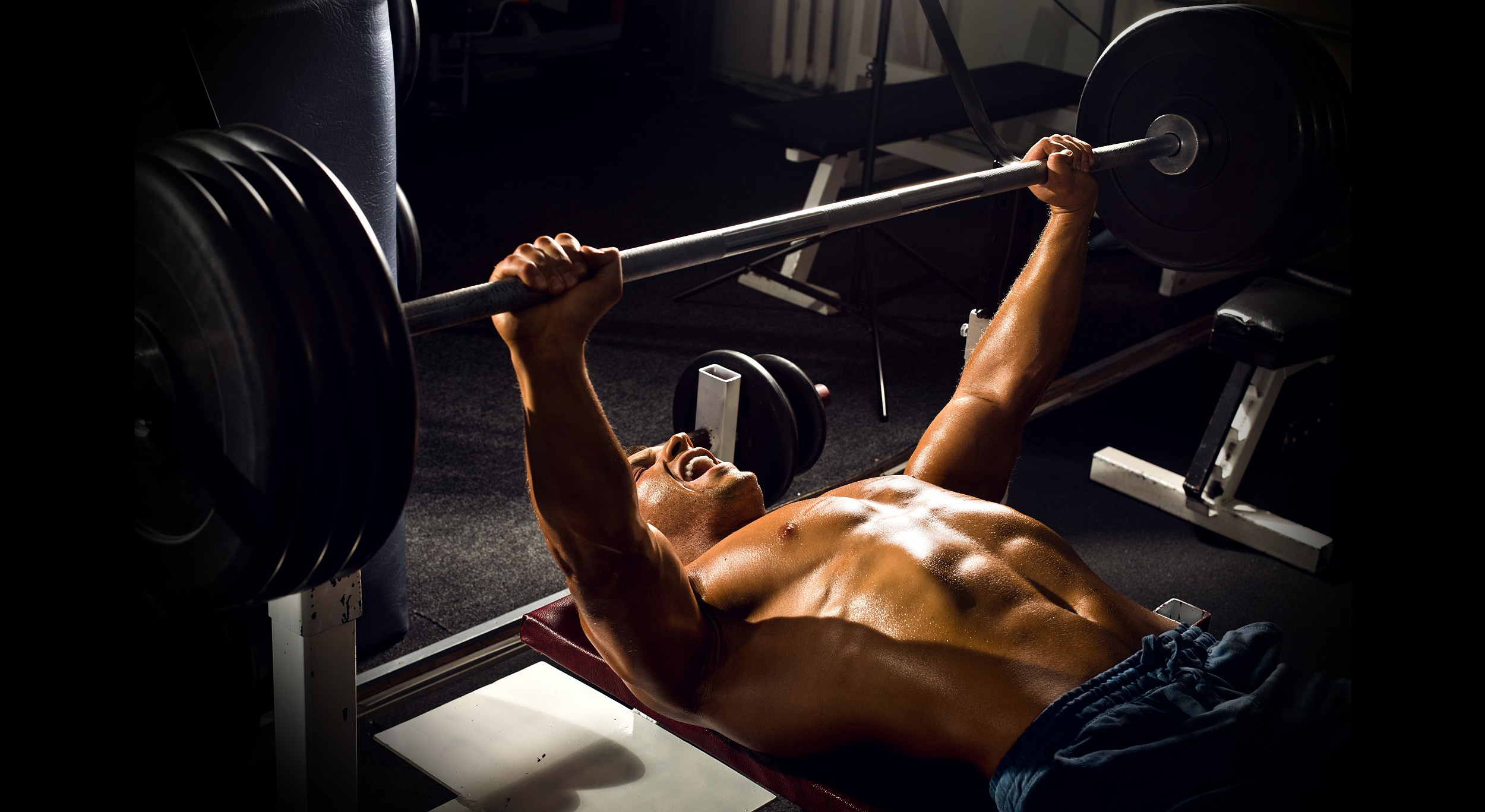
The Ultimate Bench Press Enhancer – The Box Bench Press
Dr. Joel Seedman, Ph.D.
Several weeks ago I posted an article about using the overhead box press to improve the overhead press and other vertical pressing movements. However this same concept can just as effectively be applied to the bench press and variations thereof as demonstrated here by my awesome bodybuilder Ben Lai.
To perform the box bench press, simply swap out a traditional bench for a stiff plyometric box preferably an unpadded or wooden one. Although some of the benefits are similar to a floor press, the box bench press provides 7 unique attributes that are difficult to replicate with any other training protocol.
1. The floor press is an incredibly effective upper body pressing exercise. However, the one thing it lacks is the specific leg and hip drive associated with a standard bench press particularly for powerlifting. The box bench provides similar benefits to the floor press while simultaneously working on hip and glute drive.
2. One of the most common problems during traditional bench press is excessive low back arch and lumbar hyperextension. That’s because when the feet are placed below the plane of the torso many people struggle to brace their abs and keep their core engaged. The box bench press helps to eliminate this excessive arching and lumbar extension as the stiffness of the box helps cue the lifter to maintain a more neutral spinal position and tight core while still performing a traditional bench press position (with the feet under the torso). Once you go back to traditional bench press on a softer bench you’ll likely notice that your spinal position is more neutral.
3. The box bench press requires the athlete to set their scapula, upper back, and shoulders into the most packed and biomechanically sound position or else the level of discomfort from the stiff box pressing into the upper back and shoulders is quite miserable. Although a similar benefit can be achieved from a traditional floor press, this effect is even more pronounced with the box bench. That’s because a majority of the pressure is directed into the upper back and shoulders unlike a floor press where pressure is more equally dispersed across the entire body from head to heel as a result of the legs being at the same height as the torso.
4. The stiff surface conditions associated with laying on a plyo box not only enhances shoulder mechanics, it also forces the lifter to slow the movement down and use strict form. In fact, it’s nearly impossible to bounce or collapse at the bottom of the press as doing so would feel incredibly uncomfortable on the scapula and upper back. If you have a tendency to bounce out of the bottom of your bench press, this is a sure-fire remedy.
5. Similar to the benefits of the floor press, the box bench press reinforces the most beneficial range of motion and optimal biomechanics with 90-degree joint angles as the lifter’s elbows can’t travel below the plane of the torso. Besides being incredibly safe on the joints this produces strong upper body pressing mechanics that ultimately allows for greater overload and hypertrophy gains.
6. Also similar to the floor press, the box bench press helps reinforce proper elbow tuck and optimal shoulder positioning. In fact, most lifters do a superior job of tucking their elbows on a floor press simply because they have a target to aim for with their triceps and elbows guided towards the floor. Unfortunately, these enhanced mechanics oftentimes go out the window once they move to a traditional bench press simply because they no longer have the cueing benefits of aiming for a specific target with their elbows and triceps. The box bench press provides the elbow tuck benefits associated with the floor press only applied to the actual bench press. Whether you’re a powerlifter, professional athlete, or weekend warrior, this can do wonders for improving your pressing mechanics while also saving your joints and enhancing your bench press strength.
7. The box bench press is quite versatile and can be applied to nearly any and all bench press variations including dumbbells, kettlebells, specialty bars, bottoms up presses, accommodating resistance bench presses, eccentric isometric variations, unilateral presses, speed bench press, and more.
To learn more about applying unique chest presses into workout routine check out my Complete Templates Program.

























































